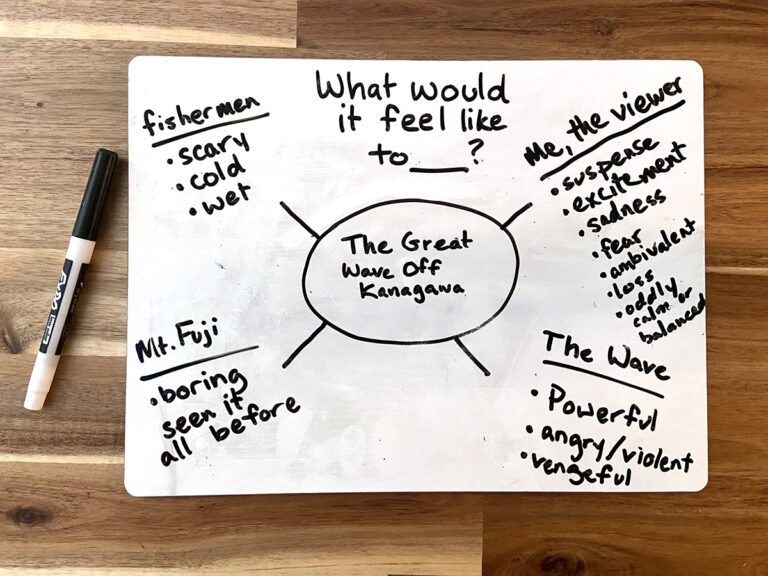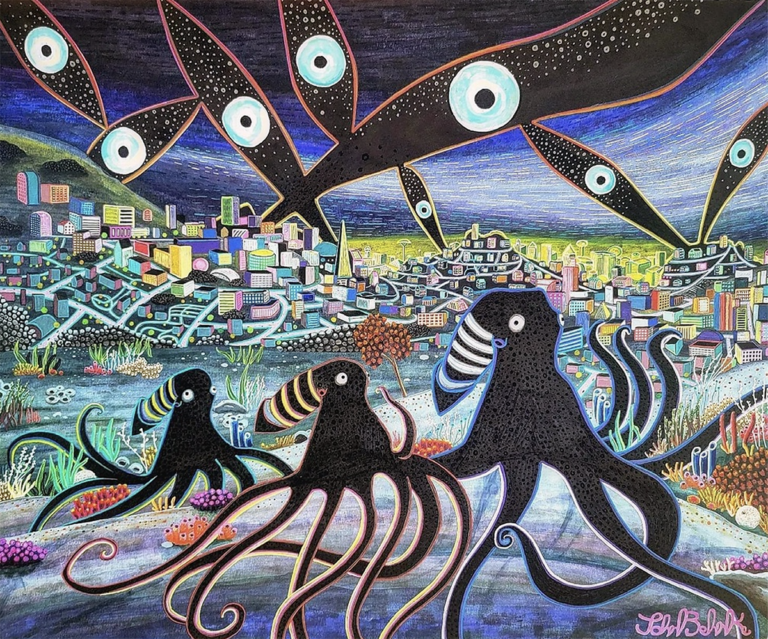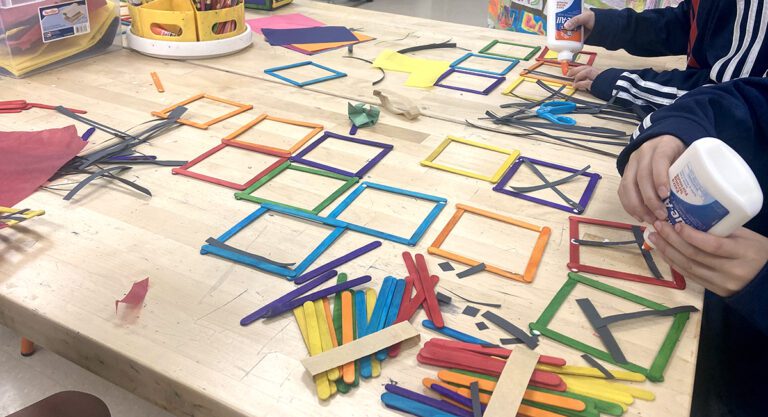We’ve all been told we need to bring writing into our art rooms. But, it can be difficult to find both the time and a way to create a meaningful connection between the two disciplines.
A few years ago, I came across the idea of 6-word stories and decided to give them a try in my classroom. The premise, which is to write a story using only six words, seemed like it might work well for our limited amount of time together.
I had no idea if it would work well or not. Although my students balked a bit at first, once they gave it a try, the results were wonderful. It was some of the most interesting writing I’d ever seen from my students. As a bonus, they took seconds to read, making them a major teacher win.
Since then, I’ve used 6-word stories in a variety of ways in my classroom, from get-to-know-you activities and exit tickets to tools for review and artist statements. The possibilities are endless. No matter how you choose to use them with your students, it’s good to give students a brief introduction and allow them some practice time.
Here’s everything you need to know to start using 6-word stories in your classroom.

Start by introducing the concept of 6-word stories to your students.
There is an urban legend that writer Ernest Hemingway made a bet that he could compose a novel using just six words. The story? “For sale, Baby shoes, Never worn.” Although the myth has been formally debunked, it has inspired many people to write their own (super) short stories. If you’re interested in finding some more examples for your students, a quick Google search will bring up tons of results on Twitter, Reddit, and elsewhere.
After reading Hemingway’s version, it helps to take a long pause to let it sink in. Read through a few more examples to show students how powerful six short words can be.
Editor’s Note: As you may have noticed, today we’re welcoming our newest writer to the AOE Team! Amber Kane is a passionate educator and practicing artist who has ten years of experience teaching art to a wide variety of students in a wide variety of settings. We know you’re going to love hearing from her! To learn more about Amber, click here, and please give her a warm welcome in the comment section!
Determine how you want to use 6-word stories with your students.
There is no right or wrong way to use 6-word stories. As I mentioned before, they work great as an assessment tool, as a way to get to know your students better, and even as artist statements.
Here are some example prompts to get you started:
- Write about how you feel when you’re at school.
- Write about how you feel when you’re in the art room.
- Write about your favorite art-related memory.
- Summarize Impressionistic paintings in six words.
- Write a 6-word story about linear perspective.
- Write a 6-word artist statement about the piece of art you just finished.
- Use a 6-word story to title your artwork.
Using the last prompt, a student titled the work below, “Why won’t you leave me alone?”
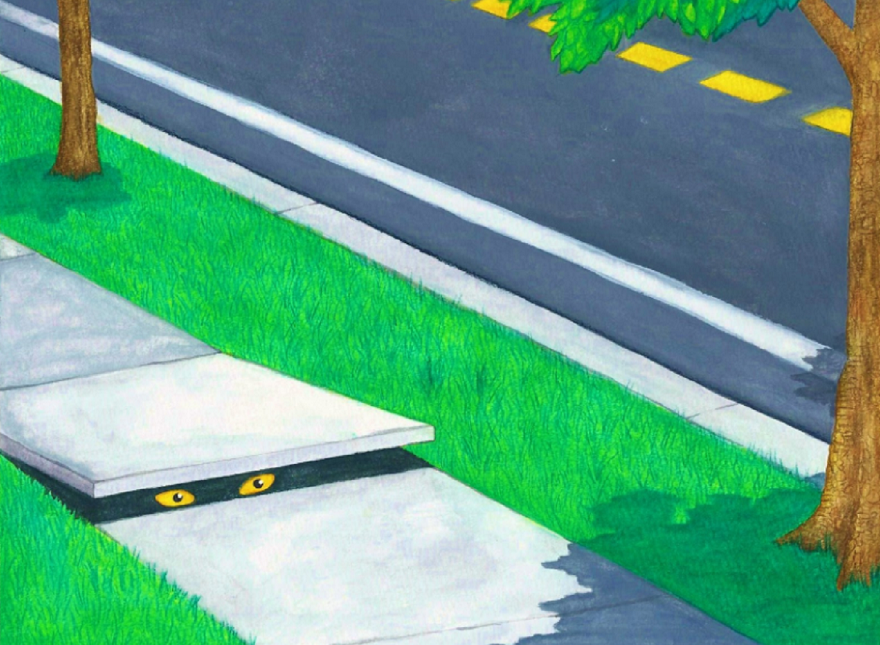
Depending on your goals, you might stop here. However, there are many ways to take 6-word stories farther.
Here are 6 more ways to take a 6-word story even further.
- Use a story as a starting point for a longer artist statement.
- Turn a story into a sketchbook prompt.
- Turn a story into a prompt for writing a longer creative story.
- Turn a story into a project prompt.
- Have students illustrate each other’s stories.
- Design a logo that goes with a story.
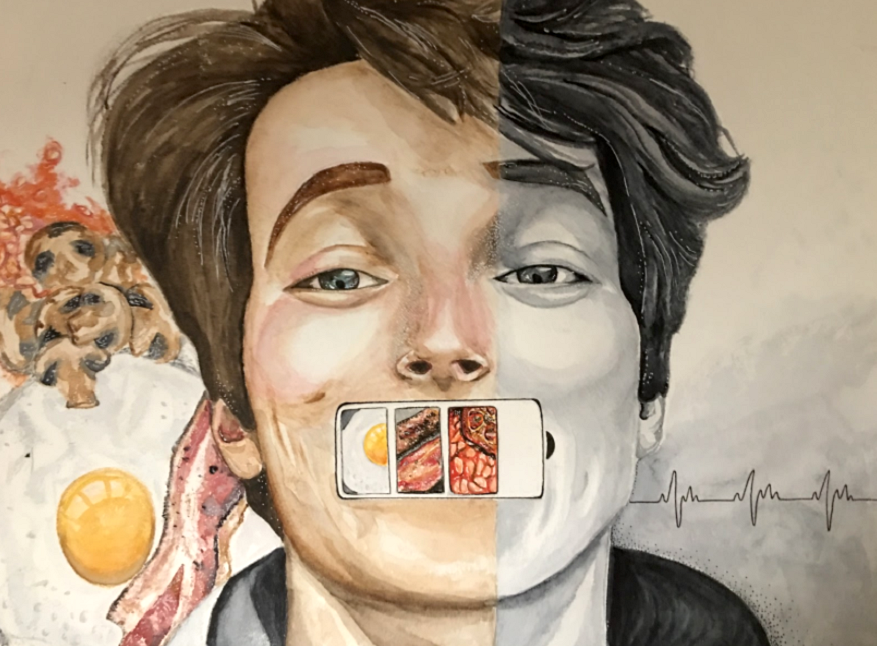
Finally, here are a few sample stories for inspiration.
- “Artist/creativity educator no longer trapped.”
- “Energetic teenage boy, glued to chair.”
- “Wrong number, says a familiar voice.”
- “Inside my head, heart moves out.”
- “Creative thought produces purposeful, pointed questions.”
No matter how you choose to use them, 6-word stories are a great way to sneak a little writing into your curriculum. They’re a great alternative to stretch your students’ creative thinking. I promise if you give them a try in your art room, you won’t be disappointed.
If you’re looking for even more ideas for helping bring writing into the classroom, check out the following 3 resources!
- 6 Amazing Art Projects that Incorporate Writing
- 3 Stress-Free Ways to Bring Writing Into Your Art Room
- Literacy Strategies for the Elementary Art Room
How might you use 6-word stories in your classroom in the coming week?
Answer the following question in a 6-word story: Why do you teach art?
Magazine articles and podcasts are opinions of professional education contributors and do not necessarily represent the position of the Art of Education University (AOEU) or its academic offerings. Contributors use terms in the way they are most often talked about in the scope of their educational experiences.

